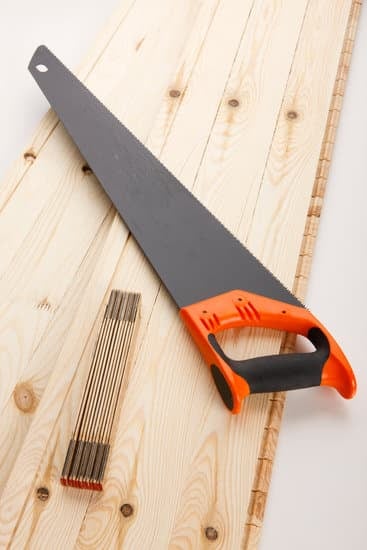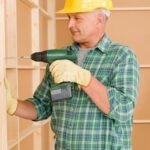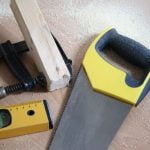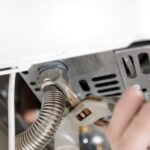Can you roll a home improvement loan into your mortgage? Understanding the different types of home improvement loans and mortgages available is essential for homeowners looking to finance renovations or upgrades. From FHA Title 1 loans to cash-out refinancing options, there are various ways to fund home improvement projects.
Similarly, there are different mortgage options that homeowners can explore. Each option has its own eligibility requirements and purposes, and understanding the details of these loan products is crucial before making any financial decisions.
Once you have a grasp of the types of home improvement loans and mortgages available, it’s important to weigh the pros and cons of rolling a home improvement loan into your mortgage. This financial decision comes with its own set of advantages and disadvantages, which can have long-term implications for homeowners. By gaining insights into this topic, it becomes easier to assess whether this option aligns with your specific needs and circumstances.
Navigating the process of combining a home improvement loan with an existing mortgage can be complex. Therefore, gaining a thorough understanding of the steps involved in rolling these loans together is essential. From assessing factors such as equity and interest rates to considering alternative financing options, homeowners should embark on this journey well-informed before making any decisions.
Pros and Cons of Rolling a Home Improvement Loan Into Your Mortgage
When it comes to financing home improvement projects, homeowners have a variety of options, including home improvement loans and mortgages. One common question that arises is whether it is possible to roll a home improvement loan into an existing mortgage. This financial decision can have both advantages and disadvantages, and it’s important for homeowners to carefully weigh their options before moving forward.
One potential advantage of rolling a home improvement loan into your mortgage is the convenience of having only one monthly payment to manage. By consolidating the two loans, homeowners may find it easier to budget and keep track of their expenses. Additionally, combining the loans could lead to lower interest rates compared to keeping them separate, potentially resulting in overall savings on interest payments over time.
On the other hand, there are notable drawbacks to consider as well. Rolling a home improvement loan into your mortgage could increase the total amount of debt secured by your property. This could have implications for your equity and financial flexibility in the long run. Furthermore, extending the repayment period through a mortgage refinance can ultimately lead to paying more in interest over time, even if the interest rate itself is lower.
Before making a decision on whether or not to roll a home improvement loan into your mortgage, homeowners should carefully assess their individual circumstances and consider seeking professional financial advice. It’s important to understand the potential impact on your overall financial situation before committing to this type of consolidation.
Steps to Rolling a Home Improvement Loan Into Your Mortgage
Rolling a home improvement loan into your mortgage can be a strategic financial decision for homeowners looking to tackle major renovation projects or repairs. By merging these two types of loans, homeowners can streamline their monthly payments and potentially access better interest rates. However, this process requires careful consideration and understanding of the steps involved.
Before deciding to roll a home improvement loan into your mortgage, it’s important to understand the potential benefits and drawbacks of this financial move. Here are some key steps to consider:
1. Assess Your Financial Situation: Evaluate your current financial standing and determine if combining these loans aligns with your long-term goals. Consider factors such as your credit score, income stability, and overall debt level.
2. Research Lenders and Loan Options: Shop around for lenders who offer the option to roll home improvement loans into mortgages. Compare interest rates, terms, and fees associated with this type of financing to ensure that it aligns with your budget and provides potential cost savings in the long run.
3. Gather Documentation: Prepare necessary documents such as proof of income, property appraisal, existing mortgage details, and project estimates for the home improvement work you plan to undertake.
By carefully considering these steps and gathering all necessary documentation, homeowners can navigate the process of rolling a home improvement loan into their mortgage more effectively. This strategic financial decision should be made with proper research and planning to ensure that it aligns with your overall financial goals.
It’s important to consult with financial advisors or mortgage professionals who can provide personalized guidance based on your specific circumstances when considering this type of financing option. Making an informed decision is crucial in order to reap the potential benefits while minimizing any associated risks.
Factors to Consider Before Rolling a Home Improvement Loan Into Your Mortgage
When considering whether to roll a home improvement loan into your mortgage, there are several important factors to take into account. Making this financial decision requires careful consideration of various aspects that can impact your overall financial situation and homeownership experience.
Current Mortgage Terms and Conditions
Before deciding to combine a home improvement loan with your existing mortgage, it is crucial to review the terms and conditions of your current mortgage. Understanding the interest rate, repayment schedule, and any potential penalties for early payoff is essential in evaluating the feasibility of rolling a home improvement loan into your mortgage.
Total Cost of Financing
Another factor to consider is the total cost of financing when combining these loans. Home improvement loans often come with different interest rates and repayment terms compared to mortgages. By assessing the overall cost of rolling a home improvement loan into your mortgage, you can determine whether this option aligns with your long-term financial goals.
Home Equity Considerations
Rolling a home improvement loan into your mortgage can impact your home equity. It’s important to evaluate how this financial move could affect the equity you have built in your home. This includes understanding the potential impact on future property value and equity accumulation, especially if the combined loan amount exceeds the current value of your home.
Considering these factors before rolling a home improvement loan into your mortgage can help you make an informed decision that aligns with your financial objectives and homeownership goals. By carefully weighing these considerations, you can determine whether this option is suitable for financing your home improvement projects or if alternative funding options may be more suitable for your circumstances.
Alternatives to Rolling a Home Improvement Loan Into Your Mortgage
There are several alternatives to rolling a home improvement loan into your mortgage. If you are considering making home improvements but don’t want to merge a loan with your mortgage, there are other financing options available to homeowners.
One alternative is applying for a personal loan, which can be used to fund renovations and upgrades without affecting your existing mortgage. Personal loans typically have shorter terms and higher interest rates compared to mortgages, but they offer the flexibility of not being tied to your property.
Another alternative is a home equity line of credit (HELOC), which allows homeowners to borrow against the equity in their homes. A HELOC functions similarly to a credit card, with a revolving line of credit that can be tapped into as needed for home improvement projects. This option provides flexibility in accessing funds for renovations, but it also carries the risk of using your home as collateral and potentially facing higher interest rates.
Additionally, homeowners can explore government-backed loan programs such as FHA 203(k) loans or energy-efficient mortgages (EEMs) that are specifically designed for home improvements. These programs offer competitive interest rates and favorable terms for eligible borrowers. However, they may have strict eligibility requirements and specific guidelines for the types of improvements that qualify.
Ultimately, before deciding on how to finance your home improvement projects, it’s important to carefully evaluate all available options and consider factors such as interest rates, repayment terms, and potential impact on your overall financial situation.
| Loan Option | Description |
|---|---|
| Personal Loan | Funds for renovations without affecting existing mortgage; shorter terms and higher interest rates |
| Home Equity Line of Credit (HELOC) | Borrow against home equity; flexible access to funds but carries the risk of using home as collateral |
| Government-Backed Loan Programs | FHA 203(k) loans or Energy-Efficient Mortgages (EEMs); competitive interest rates with specific eligibility requirements |
Impact on Home Equity and Interest Rates
Rolling a home improvement loan into your mortgage can have a significant impact on both home equity and interest rates. When considering this financial decision, it is crucial to understand the potential consequences for your overall financial situation.
Combining a home improvement loan with your mortgage can affect the amount of equity you have in your home. Equity refers to the value of your property that you truly own, which is calculated by subtracting the amount you owe on your mortgage from the current market value of your home.
By rolling a home improvement loan into your mortgage, you are essentially increasing the total amount of debt secured by your property. This can influence your overall equity position because it changes the ratio between the outstanding mortgage balance and the market value of your home.
If property values decline or if you end up owing more than your home is worth (known as being “underwater” on your mortgage), it can have long-term implications for building wealth and financial stability.
Moreover, combining a home improvement loan with a mortgage can also impact interest rates. Mortgage loans typically carry lower interest rates compared to other types of loans because they are secured by real estate. However, adding a home improvement loan to your existing mortgage could affect the terms and interest rates associated with the entire amount borrowed.
It’s important to carefully consider how this might influence future payments and overall borrowing costs over time when weighing the decision to roll these loans together. Understanding these implications is crucial for homeowners looking to make informed financial decisions that align with their long-term goals and financial well-being.
Case Studies and Real-Life Examples
Many homeowners may wonder if they can roll a home improvement loan into their mortgage, and real-life examples can provide practical insights into this financial decision. By examining specific case studies, individuals can gain a better understanding of the process and potential outcomes of combining these two types of loans.
Successful Integration
One real-life example involves a couple who decided to integrate their home improvement loan with their existing mortgage. They were able to leverage the equity in their home to obtain a cash-out refinance, allowing them to pay off their high-interest home improvement loan and consolidate it with their mortgage.
As a result, they benefited from a lower interest rate and simplified monthly payments. This case study demonstrates that rolling a home improvement loan into a mortgage can be an effective way to streamline debt and potentially save on interest costs.
Considerations for Homeowners
Another real-life example highlights the importance of carefully considering the implications of merging these two types of loans. A homeowner faced challenges after rolling their home improvement loan into their mortgage, as they underestimated the total costs involved and encountered difficulty managing the increased combined debt. This case study serves as a cautionary tale, emphasizing the need for thorough research and financial planning before making such a decision.
Navigating Financial Complexity
These real-life examples showcase the diverse outcomes that can arise from rolling a home improvement loan into a mortgage. They demonstrate the complexity of this financial decision and underscore the importance of evaluating individual circumstances, considering all possible ramifications, and seeking professional guidance when necessary. Ultimately, homeowners can learn from these case studies to make more informed decisions regarding integrating their home improvement loans with their mortgages.
Tips for Making Informed Financial Decisions
In conclusion, the decision to roll a home improvement loan into your mortgage is a significant financial move that requires careful consideration. While this option can provide homeowners with a convenient way to finance renovation projects and potentially save on interest rates, it also comes with certain risks and implications that should not be overlooked.
By understanding the various types of home improvement loans and mortgages available, as well as the eligibility requirements for each, homeowners can make informed decisions about whether or not to combine these two types of loans.
It’s important to carefully weigh the pros and cons of rolling a home improvement loan into your mortgage before making a decision. On one hand, consolidating these loans can simplify monthly payments and potentially lead to lower interest rates. However, it may also result in higher overall costs over time and impact the equity in your home. Therefore, homeowners should consider seeking advice from financial experts and evaluating their specific financial situation before moving forward with this option.
Ultimately, there are alternatives to consider when it comes to financing home improvement projects. Homeowners can explore options such as personal loans, home equity lines of credit, or even savings accounts to fund their renovations.
By thoroughly researching and comparing these options, individuals can make well-informed decisions that align with their long-term financial goals. As always, conducting thorough research and seeking guidance from professionals can help individuals avoid potential pitfalls and make sound financial choices when it comes to funding home improvements.
Frequently Asked Questions
Can I Add Home Improvements to My Mortgage?
Adding home improvements to your mortgage is possible through a renovation loan or a refinance with a renovation component. This allows you to finance the cost of the improvements into your mortgage, spreading the payments over time.
Can You Use a Home Improvement Loan for Something Else?
While a home improvement loan is specifically designed for funding renovations or repairs, in some cases, you may be able to use the funds for other purposes. However, it’s important to check the terms and conditions of the loan to ensure its appropriate use.
Can You Add Renovation Costs to FHA Mortgage?
Yes, with an FHA 203(k) loan, you can add renovation costs to your mortgage. This type of loan provides funds not only for purchasing the property but also for making necessary renovations or repairs. It can be a convenient option for financing both the purchase and renovation of a home.

I’m thrilled to have you here as a part of the Remodeling Top community. This is where my journey as an architect and remodeling enthusiast intersects with your passion for transforming houses into dream homes.





